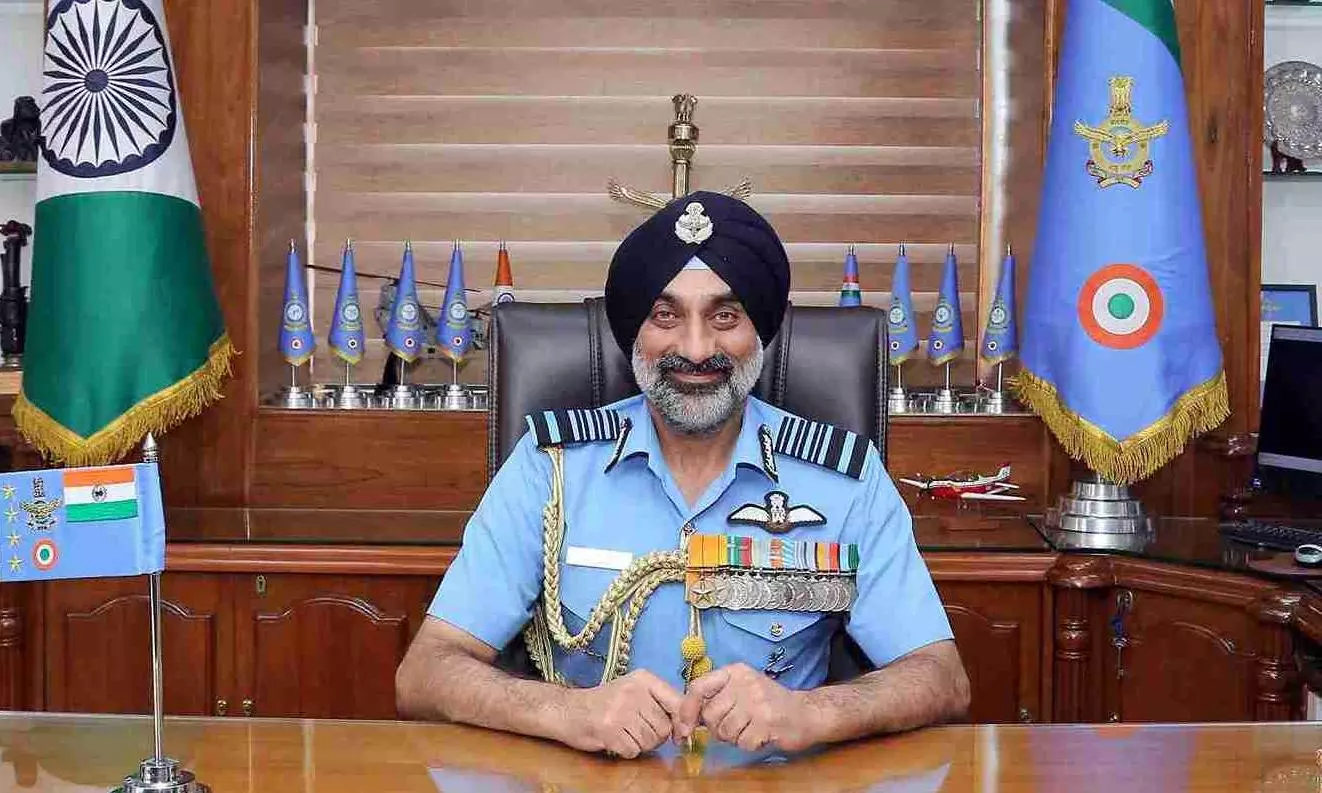
5 Pakistani fighter jets, 1 large aircraft shot down during Op Sindoor: IAF chief
Air Chief Marshal AP Singh confirms the largest ever surface-to-air kill during Operation Sindoor, with six radars and two command centres also destroyed

The Indian Air Force (IAF) has shot down five Pakistani fighter aircraft and one large aircraft during Operation Sindoor, the Chief of the Air Staff, Air Chief Marshal AP Singh, said on Saturday (August 9).
'Largest surface-to-air kill'
Speaking at an event in Bengaluru at the Hal Management Academy, he also said that this was the largest ever recorded surface-to-air kill.
“We have an indication of at least one AEW&C in that AEW&C hangar and a few F-16s, which were under maintenance there...We have five confirmed kills and one large aircraft, which could be either an ELINT aircraft or an AEW &C aircraft, which was taken on at a distance of about 300 kilometres. This is actually the largest ever recorded surface-to-air kill that we can talk about,” said Singh as quoted by ANI.
“Shahbaz Jacobabad airfield, one of the major airfields that was attacked. Here, there's an F-16 hangar. One half of the hangar is gone. And I'm sure there were some aircraft inside which have got damaged there. We were able to get at least two command and control centres, like Murid and Chaklala. At least six radars, some of them big, some of them small,” he added.
Also Read: 10 things PM Modi said about Operation Sindoor in Lok Sabha
'No restrictions imposed on forces'
Singh also said that “political will” was one of the key reasons behind the success of Operation Sindoor adding that no restrictions were imposed on the armed forces.
"A key reason for success was the presence of political will. There was very clear political will and very clear directions given to us. No restrictions were put on us... If there were any constraints, they were self-made. The forces decided what the rules of engagement would be. We decided how we wanted to control the escalation. We had full freedom to plan and execute," Singh said.
"There was a synchronisation between the three forces... The post of CDS made a real difference. He was there to get us together. NSA also played a big role in getting all the agencies," he added.
‘S-400, a game changer’
The IAF chief also said that the recently purchased Russian-made S-400 air defence systems ensured that the Pakistani Air Force could not use their long-range glide bombs against India, as they failed to penetrate the system.
“Our air defence systems have done a wonderful job. The S-400 system, which we had recently bought, has been a game-changer. The range of that system has really kept their aircraft away from their weapons like those long-range glide bombs that they have; they have not been able to use any one of those because they have not been able to penetrate the system,” said Singh.
Also Read: Rajnath Singh on Operation Sindoor: No loss to the Indian military
‘Hardly any collateral damage’
Showing before and after images of the attack on Muridke-LeT HQ during Operation Sindoor, Chief of the Air Staff, Air Chief Marshal AP Singh, pointed out the residential area of their senior leadership and the office buildings where meetings were held.
"This is their senior leadership's residential area. These were their office building where they would get together to conduct meetings. We could get video from the weapons themselves as the location was within range,” said Singh.
"These are the before and after images of the damage we caused at Bahawalpur - JeM headquarters. There's hardly any collateral here. The adjacent buildings are fairly intact. Not only did we have satellite pictures, but also from local media, through which we could get inside pictures,” he added.
Also Read: Opposition’s volte-face on Operation Sindoor debate stuns govt, Lok Sabha Speaker
‘Heavy damage forced Pak for talks’
Singh also said that Pakistan suffered so much damage during the conflict that they had no choice but to contact the Indian DGMO, saying that they wanted to hold discussions, adding that the Pakistani military realised that if they continued the escalation, they would suffer even more damage.
"It was a high-tech war. In 80 to 90 hours of war, we were able to achieve so much damage that it was clear to them that if they continue, they are going to pay for it more and more. So they came forward and sent a message to our DGMO that they wanted to talk. This was accepted on our side,” said Singh.
"Sargodha, we've grown up in our Air Force, dreaming about days like this. Someday, we'll get a chance to go there. So it just so happens that I got my chance just before I retired. So we took on the airfield there,” he added.
(With agency inputs)

